A school Administrator's guide to
Improving
College
readiness
Through
Arts, Athletics,
& Family Engagement

01
Let's Begin
Table of Contents
02
Not Your Ordinary Guide
03
How Did We Get Here?
04
Formula for Success
05
How Does it Work?
06
Preparing to Partner
07
Stakeholders
08
Curriculum
09
Executing the Partnership
10
Where Do We Go From Here?
11
Resources
12
References

A School Administrator’s Guide to Improving College Readiness Through Arts, Athletics, and Family Engagement is a practical resource for high school administrators. The guide aims to establish successful partnerships with families to increase student participation in extracurricular activities and improve college readiness. It offers step-by-step instructions, checklists for progress tracking, and resources, including worksheets, suggested activities, and reading lists. By utilizing this guide, administrators can effectively engage families, motivate students, and achieve the shared goal of enhancing college readiness through arts and athletics participation.
Let's Begin
not your ordinary Guide
A step-by-step guide for partnerships between high school administrators and families to increase student participation in extracurricular activities and improve college readiness.
A limited emphasis on art and athletic extracurricular involvement contributes to a lack of college-ready high school graduates [1]. A successful partnership between school leaders and families can be the solution [2]. By applying our plan to your school and creating a successful partnership, you can increase student participation in extracurriculars and, in turn, college readiness.
This guide can
help your school...
Engage families to be effective allies because they have the most significant influence on the students [3].
Partner with families to inspire students to participate in arts and athletics and become more college ready.

Where?Who?
Where?
This guide can be applied to all U.S. high schools because the lack of college readiness exists for students across the country [4].
Who?
This guide focuses on a partnership between high school administrators and families of high school students. High school students, teachers, and parent groups and organizations also play a role in the partnership.
how did we get here?
The 2015 reauthorization of the Elementary and Secondary Education Act of 1965 (ESEA) replaced the No Child Left Behind Act of 2001 (NCLB) and created opportunities for schools to move away from standardized testing and increase family engagement. This reauthorization, the Every Student Succeeds Act of 2015 (ESSA), decreased testing to once for math, reading, and science in high school and increased state-level flexibility for standards. As a result, extracurricular activities could become a greater focus for U.S. high schools.
The reauthorized ESEA 1965 created the framework for family engagement efforts. Specifically, a section on shared responsibilities for academic achievement outlines students’ extracurricular involvement as a shared responsibility between schools and families [5].

Your school can use this guide to meet the ESEA 1965 guidelines and develop a partnership with parents that may improve students' extracurricular participation and increase college readiness.
Formula
for
success
CR = EC + FE
college readiness = Extracurriculars + family engagement
This guide follows the formula: college readiness equals extracurriculars plus family engagement (CR = EC + FE). The formula highlights a family's influence over their child and how they can positively impact college readiness by encouraging extracurricular involvement, particularly in the arts and athletics [6].
College Readiness
College readiness is the acquisition of skills necessary for a student to be successful during their undergraduate study [7].
Many students entering higher education are still not college ready [8]. The benefits of a college degree are undeniable, including higher salaries upon graduation, higher levels of fulfillment, and better overall life satisfaction [9]. However, college readiness is an essential factor in ensuring a successful future in college and post-college graduation [10].
Contemporary college-readiness skills include accountability, determination, mental and emotional strength, Self-motivation, organizational skills, self-awareness, social skills, study skills, teamwork, time management, and work ethics.
The standard high school core curriculum does not teach all the elements necessary to acquire these skills [11]. Instead, families should be looking at extracurricular offerings to help build college-readiness skills lacking in core courses [12]. As a result, it is crucial to follow the formula CR = EC + FE and inspire families to help increase student participation in these extracurriculars.
Participation in both arts and athletics can result in higher social capital, likelihood of graduating, and post-secondary educational attainment [13].
Extracurricular Participation in Arts and Athletics
College-readiness levels are directly correlated to social capital, graduation rates, and future educational attainment [14].
Research suggests that high school students can increase their social capital and educational attainment by participating in arts and athletics. Furthermore, participating in a combination of extracurricular activities presents the strongest results [15]. Similarly, other researchers found that high school students' dropout rates dramatically decrease when they participate in both arts and athletics. Their findings demonstrate the connection between a greater variety of extracurricular participation and more exposure to diverse activities, people, and ideas [16].
Family engagement
Family members can significantly impact a student’s educational trajectory, including extracurricular choices.
Because college readiness is a collection of learned skills, family involvement in a student's educational decisions can greatly affect their attainment levels [17].
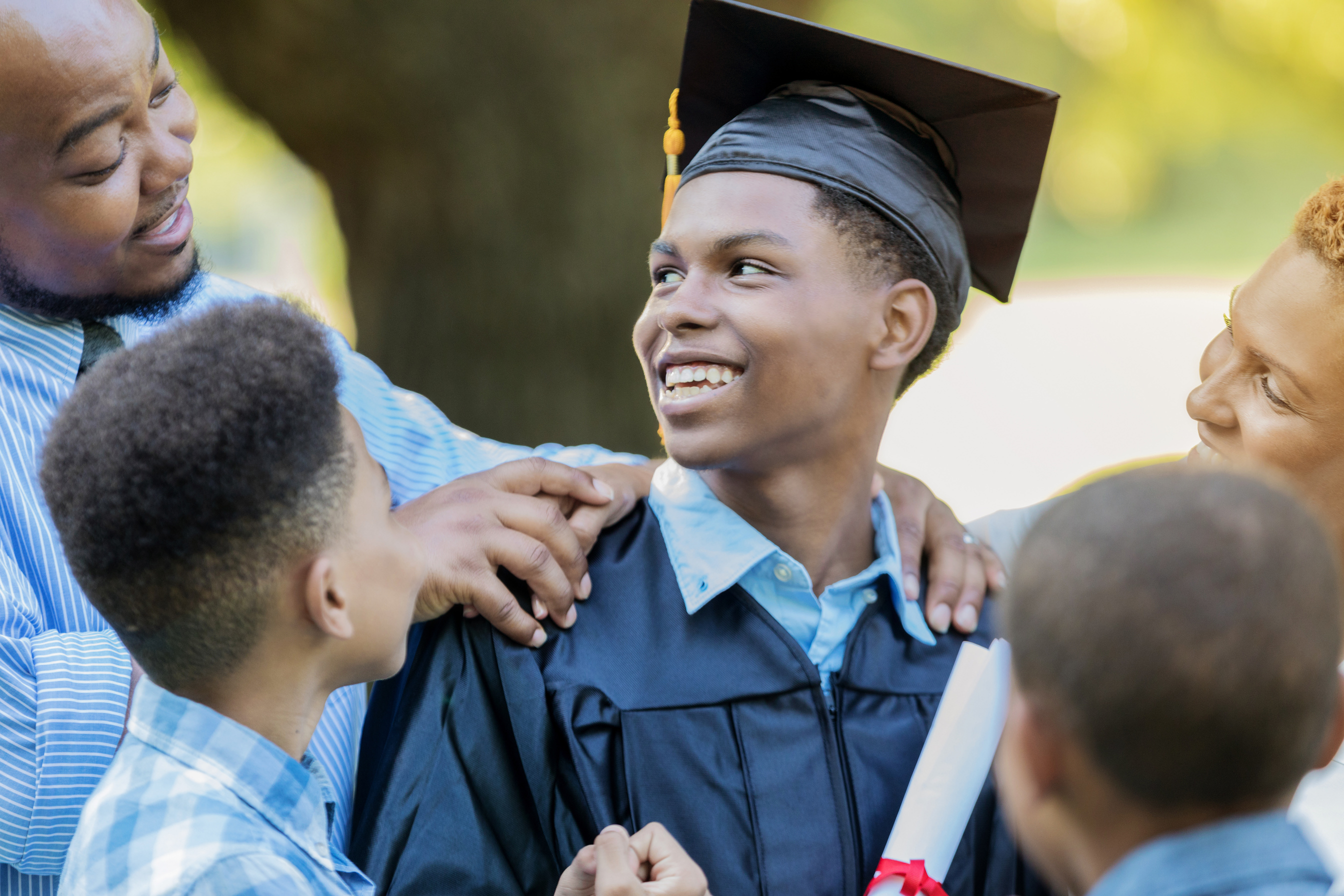
Instructions
This guide includes 11 steps to facilitating a successful and sustained partnership between your school and family community to achieve CR = EC + FE. Each step includes a checklist to ensure your school is ready to move to the next phase. Most checklist items have multiple suggestions to complete the task.
If, at any point, the partnership stalls or becomes unsuccessful, review the checklist items to determine the root of the issue. The checklist items are meant to serve as examples of common problems and pitfalls that may occur during the partnership. This guide understands that partnership attempts are never perfect and that planning for failure is necessary for success.
How does it work?
Notes
When the guide mentions extracurricular activities, it refers to arts and athletics. It is important to remember that while all extracurricular participation can be beneficial, research indicates that participating in both arts and athletics presents the best results regarding college readiness [18].
Although research demonstrates that parent engagement with students has the strongest impact, the guide intentionally focuses on family engagement [19]. This slight expansion of scope is because it is not inclusive to assume that all students have "typical" two-parent family structures. Therefore, family engagement includes parents, caregivers, guardians, and even influential community leaders.

Ready?
By following this guide, your school can foster a partnership with families that has measurable and achievable goals, is long-lasting, and is mutually beneficial to all.
Most importantly, your school will find that the partnership results in engaged families willing to motivate their children to participate in arts and athletics with the common goal of increasing college readiness.

preparing to partner

Step 1 Mission, Vision,
and Goals
Transform Mission into Action for Student Success
Goals
Step 1 evaluates your school’s current mission, vision, and goals and ensures they reflect the ESEA 1965’s guidelines for students’ extracurricular involvement as a shared responsibility between schools and families. In addition, this step encourages your school to consider a supplementary mission, vision, and goals for the partnership with families. Lastly, Step 1 helps secure initial commitment from the staff to ensure the partnership’s success.
Checklist
The following checklist confirms that your school has a mission, vision, goals, and your staff's commitment to the partnership.
Mission, Vision, and Goals Checklist
1.1
Your school mission statement outlines expected family engagement and accounts for the ESEA 1965’s guidelines for students’ extracurricular involvement AS a shared responsibility between schools and families.
- Create or edit your school’s mission, vision, and goals to outline expected family engagement, which includes the ESEA 1965 guidelines.
- Reevaluate how to best position and market the school’s mission, vision, and goals to the families and local community.
1.2
Your school has a supplementary mission statement prioritizing positive and constructive family engagement rooted in diversity, equity, and inclusion (DEI).
- Create or edit your supplementary mission statement prioritizing positive and constructive family engagement rooted in DEI.

sample mission statement:
At [School Name], we are committed to fostering a strong sense of community and collaboration to support the success of our students. We firmly believe that when schools and families work together, we can create an inclusive environment that nurtures students' holistic growth. By actively engaging families in all aspects of their child's education, we can provide a well-rounded experience that prepares students for their future endeavors. Through open lines of communication, inclusive practices, and collaborative decision-making, we aim to foster a partnership that enhances student engagement, amplifies their college readiness, and sets them on a path toward lifelong success.
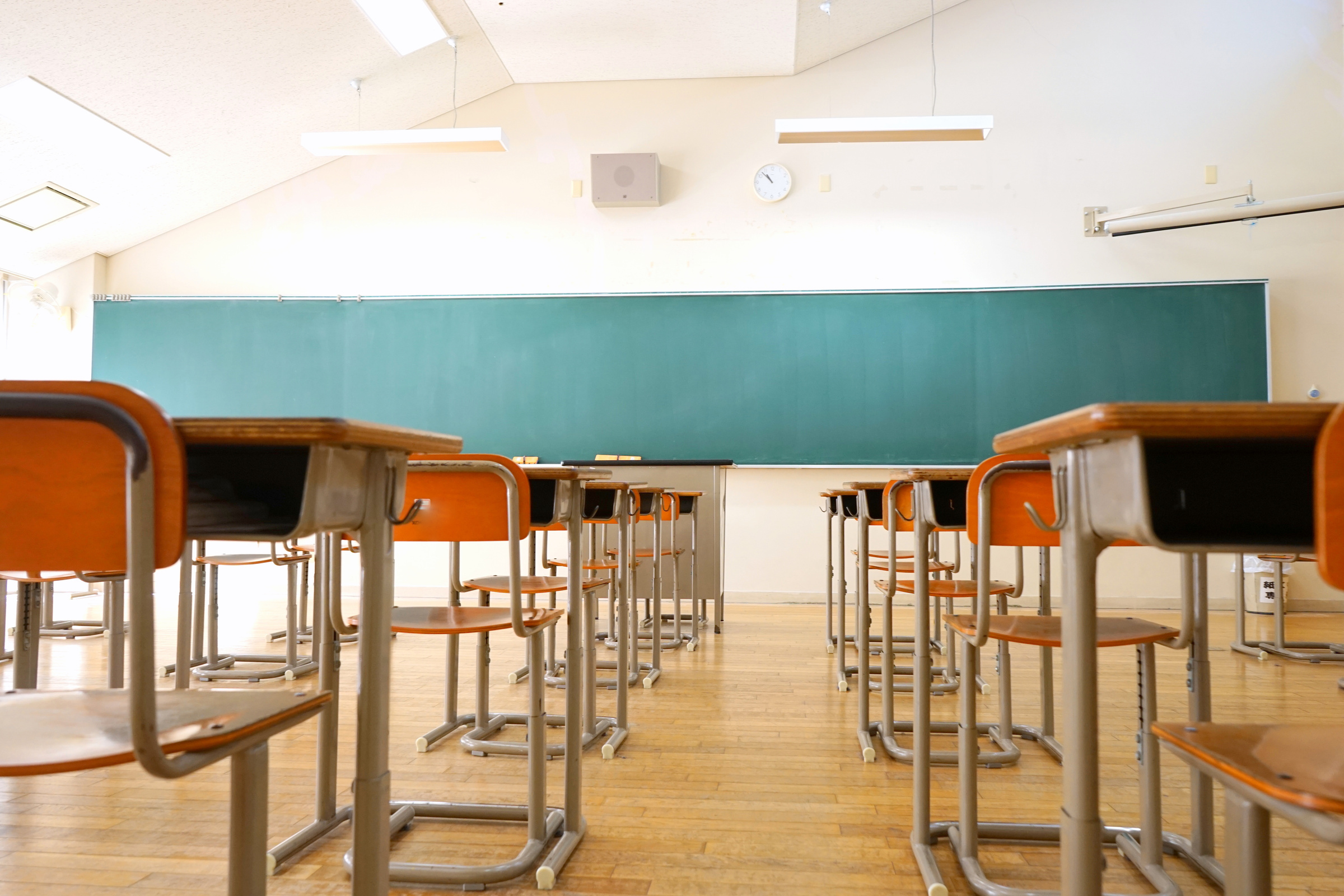
1.3
Your school has short- and long-term goals to improve family engagement.
- Create or adjust a strategic plan with short- and long-term goals associated with improving your school's family and community engagement efforts and opportunities.
1.4
There is staff commitment to increasing college-readiness levels via family engagement to improve extracurricular participation.
- Conduct professional development opportunities to educate the staff on the importance of partnerships in increasing college readiness. See the Resources section for research articles and sources.
- Begin to mobilize staff for the pending partnership by incentivizing them with work-related benefits. These incentives could also extend outside the school with community partners. See the Resources section for a list of incentive options.
- Conduct a pilot program with interested staff members who could potentially influence others to commit. The pilot program should focus on a student group, a single class, or even one grade of students instead of the entire high school.
- Create a plan to regularly check in with staff about the project.
1.5
All checks?
- If all the checklist items are accounted for, then your school has a mission, vision, goals, and initial staff commitment for the partnership. Proceed to Step 2 to determine the necessary skills for the partnership’s success.
- If you do not have all the checklist items accounted for, review the bulleted suggestions to help accomplish each task.

Stakeholders
Step 2 Necessary Skills and Strategic Alliances
Unlocking the Keys to Success
Goals
Step 2 determines how your school will fill the necessary skills for the partnership’s success. These skills include financial, legal, internal communication, external communication, evaluation, and educational knowledge. Your school should expect to fill these skill needs with current staff, potential partners, existing partners, and third-party options.

Checklist
The following checklist ensures your school has the existing resources and potential connections to fulfill the required skills for the partnership.

Necessary Skills and Strategic Alliances CHECKlist
2.1
YOUR SCHOOL HAS THE STAFF AND RESOURCES TO FILL THE FOLLOWING skill NEEDS FOR THE PARTNERSHIP: FINANCIAL, LEGAL, INTERNAL COMMUNICATION, EXTERNAL COMMUNICATION, EVALUATION, AND Educational KNOWLEDGE.
- Analyze current staff, resources, potential partners, and existing partners to determine if they have the necessary skills for the partnership.
- Educate and incentivize staff who can take on new roles.
- Consider reallocating budgets to accommodate new internal or external hires to fulfill the required skill needs, if possible.
2.2
Your school has existing partnerships or potential partnerships to fill the following skill needs for the partnership: Financial, legal, internal communication, external communication, evaluation, and educational knowledge.
- Determine if current or potential partnerships can help satisfy the required skills that the school staff may not have. Institutes of higher education and community partners, such as Parent Associations, Parent Teacher Associations, community centers, and religious organizations, are likely candidates for strategic alliances. Potential community partners are especially helpful for schools with non-traditional families.
- Conduct outreach to current or potential partner organizations to fill needs.
- Look to potential family partners to determine if they can fulfill the remaining skills required for the partnership.
- Consider a third party to handle specific tasks such as legal and financial. Sometimes having a knowledgeable third party to manage these tasks can be beneficial.

2.3
All checks?
- If all the checklist items are accounted for, then your school has the existing resources and potential connections to fulfill the required skills for the partnership. Proceed to Step 3 to confirm your school understands the current landscape of your community and family population to ensure inclusivity within the partnership.
- If you do not have all the checklist items accounted for, review the bulleted suggestions to help accomplish each task.

Step 3 Diversity, Equity, & Inclusion
Empower Your Partnership with Inclusivity
Goals
Step 3 prioritizes inclusivity within the partnership. Your school must have a diversity, equity, and inclusion (DEI) mission that reflects a clear understanding of the community and takes necessary measures to operate by this mission.
Checklist
The DEI Checklist confirms your school understands the current landscape of your community and family population to ensure inclusivity within the partnership.

sample DEI mission statement:
At [School Name], we are dedicated to fostering an inclusive and diverse community that embraces and empowers all families and community members. We value the unique identities, backgrounds, and experiences that everyone brings, recognizing that diversity enriches our collective strength. We are committed to cultivating an environment that promotes equity, respect, and understanding, where everyone feels a sense of belonging and is welcomed as an integral part of our school family. Through ongoing engagement, open dialogue, and collaborative partnerships, we strive to create a space where every voice is heard, valued, and celebrated. Together, we work towards building a community that uplifts and supports the success and well-being of all our students, families, and community members.
DEI CHECKlist
3.1
Your school has a mission statement for DEI that encompasses all family and community members.
- Create or reevaluate a DEI mission statement for your school to guide inclusivity efforts.
- Perform an equity audit on your school’s current programming and communication efforts to determine how they can be more inclusive and reach as many families as possible.
- Create additional promotional material for the partnership, informing the community of the partnership’s DEI emphasis and desire to include all families.

3.2
Your school takes measures to be inclusive to all families.
- Enlist the help of trusted family stakeholders to help facilitate engagement and serve as liaisons to underrepresented groups.
- Conduct an equity audit on your school's existing DEI protocols.
- If possible, allocate resources to create an internal DEI leadership position to reevaluate and update programming, curriculum, and communication.
Your school has a plan to market the partnership to every family structure in the community.
- Research your school community’s family structures to determine the target audiences for a marketing plan. These structures may include tradition vs. non-traditional, high-income vs. low-income, native English speakers vs. non-native English speakers, first-generation high school graduates vs. non-first-generation high school graduates, and families that include various races/genders/sexualities/disabilities/etc.
- Use data to determine if certain student groups are more or less involved in extracurriculars than others.
- Determine if certain student groups are more or less college ready than others.
- Research if certain family groups are more or less involved with the school than others.
- Analyze past outreach delivery, methods, and content to determine what has worked for your school.
- Create a marketing plan that best serves your school community’s families.
- Engage in community partnerships and rely on local organizations to help connect with families.
3.3
3.4
All checks?
- If all the checklist items are accounted for, then your school understands the current landscape of their community and family population and can ensure inclusivity and accessibility within the partnership. Proceed to Step 4 to ensure your school is engaging families effectively to build mutual trust and a willingness to partake in the partnership.
- If you do not have all the checklist items accounted for, review the bulleted suggestions to help accomplish each task.
Step 4 Family engagement
Finding Success Together

Goals
Step 4 highlights the importance of confirming that most families are ready to engage in a partnership. Your school must have effective communication channels and mutual trust with families to guarantee a successful partnership.
Checklist
The Family Engagement Checklist ensures your school effectively engages families to build mutual trust and a willingness to partake in the partnership.

Family ENGAGEMENT Checklist
4.1
Families are positively involved in school functions like Classroom activities, school events, the college process, curriculum design, extracurricular activities, school operations, etc.
- Create clear rules and expectations for families to engage with your school. The mission to have more positive and constructive involvement should drive these guidelines.
- Provide educational opportunities for families around the engagement mission, rules, and expectations to prepare them for success.
- Find ways to incentivize positive family engagement. See the Resources section for a list of incentive options.
- Recognize families who are leaders and examples of how to be positively involved in the school community.
- Determine how family engagement varies based on family demographic and structure. Consider this data in relation to the partnership’s marketing plan.
4.2
Your school conducts regular outreach to families to increase and facilitate positive engagement.
- Determine if your school provides enough engagement opportunities or if families are not taking advantage of them.
- Analyze current outreach delivery, methods, and content to determine what works for your school relative to your family community.
- Continue to find ways to incentivize positive family engagement. See the Resources section for a list of incentive options.
- Determine the faculty and staff leading the charge for positive outreach and communication and incentivize them to continue. See the Resources section for a list of incentive options.
- Partner with local community organizations to help increase and facilitate positive engagement from families.
- Reevaluate your school’s overall external communication plan in relation to the partnership’s marketing plan to incorporate more opportunities for positive family engagement.
4.3
There is trust between your school and its family community.
- Reevaluate current relationships and conduct updated outreach with the engagement mission, rules, and expectations.
- Develop or nurture trust between your school and your families through proper communication channels.
- Incentivize long-lasting support from families. See the Resources section for a list of incentive options.
- Partner with local community organizations to help increase trust between the school and families.
- Determine how trust levels vary based on family demographic and structure. Consider this data in relation to the partnership’s marketing plan.
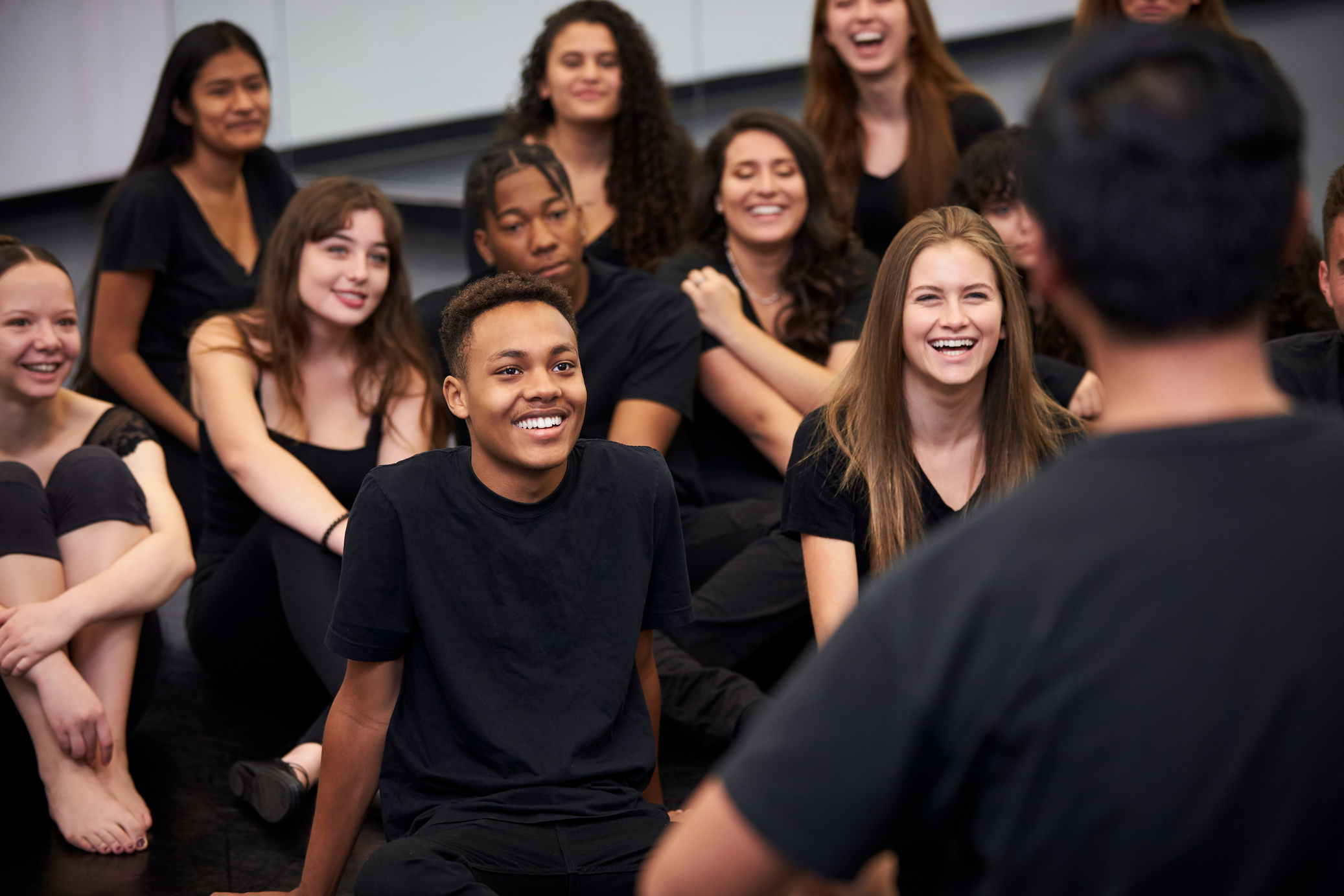
4.5
All checks?
- If all the checklist items are accounted for, then your school is engaging families effectively to build mutual trust and a willingness to partake in the partnership. Proceed to Step 5 to ensure your school provides the necessary extracurricular offerings and that your school and its community value extracurricular participation and its benefits.
- If you do not have all the checklist items accounted for, review the bulleted suggestions to help accomplish each task.
4.4
Families are willing to Potentially partner with your school to increase college readiness through extracurricular participation.
- Develop or nurture trust through proper communication channels between your school and your families.
- Determine families who could partner with your school to increase college readiness through extracurricular participation. Incentivize these families to test the partnership. See the Resources section for a list of incentive options.
- Develop or nurture trust through proper communication channels such as the Parent Association and/or Parent Teacher Association to nurture willing partners.
- Look to the Parent Association or Parent Teacher Associate to identify families and individuals who could potentially partner with your school to increase college readiness through extracurricular participation.
- Partner with local community organizations to help increase and facilitate positive family engagement.

curriculum
Step 5 Extra-
curricular
Activities
Elevating College Readiness through Purposeful Programs
Goals
Step 5 focuses on your school’s extracurricular activities. Your school must have a mission for its extracurricular activities and necessary offerings, staffing, and resources to improve college-readiness skills.
Checklist
The Extracurricular Activities Checklist ensures that your school provides the necessary extracurricular offerings and that your school and its community value the benefits of extracurricular participation.
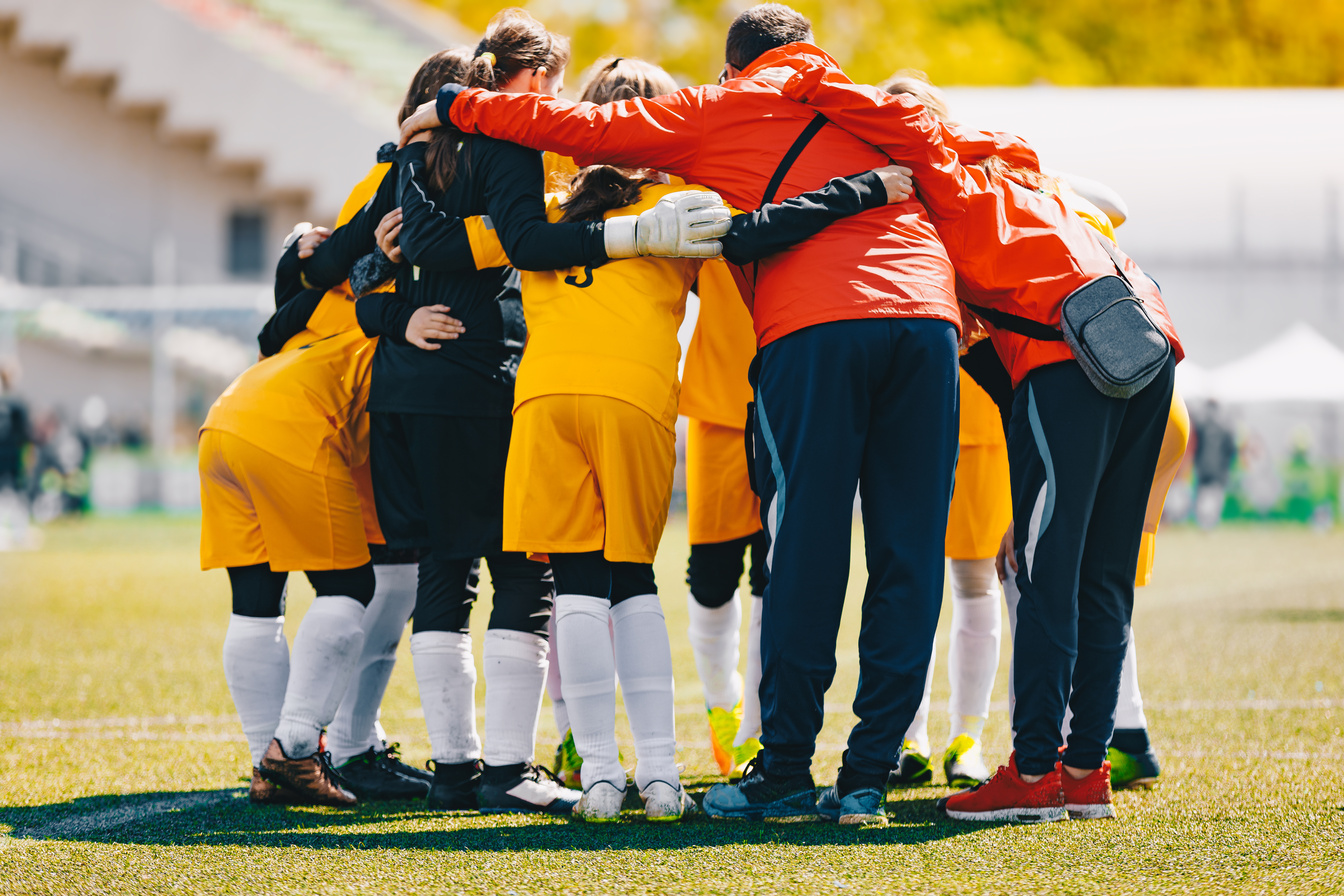

Extra-Curricular activities CHECKlist
5.1
Your school has a mission for extracurricular activities within the greater curriculum.
- Reevaluate the curriculum's mission and determine how extracurriculars fit into the larger plan.
- Ensure college counseling/guidance teams understand the importance of extracurricular offerings relative to college readiness.
- If possible, review your school's budget to ensure there are sufficient funds to support extracurricular activities within the greater curriculum.
5.2
Your school offers a variety of in-school and after-school arts and athletics activities and has a plan to improve overall extracurricular offerings and participation.
- Reevaluate your school's long-term goals for extracurriculars within the greater curriculum. In addition, ensure they are measurable and attainable.
- Determine additional extracurricular needs to improve offerings, limit barriers to access, and increase overall participation.
- Review your school's budget to find ways to improve extracurricular offerings, if possible.
- Recognize how strategic partners can help bolster extracurricular offerings and improve participation.
- Reevaluate your school's internal and external communication plans regarding extracurricular offerings.
- Solicit stakeholder feedback to continue improving offerings and participation based on the community's needs.
- Determine ways to incentivize student participation in extracurricular activities. See the Resources section for a list of incentive options.
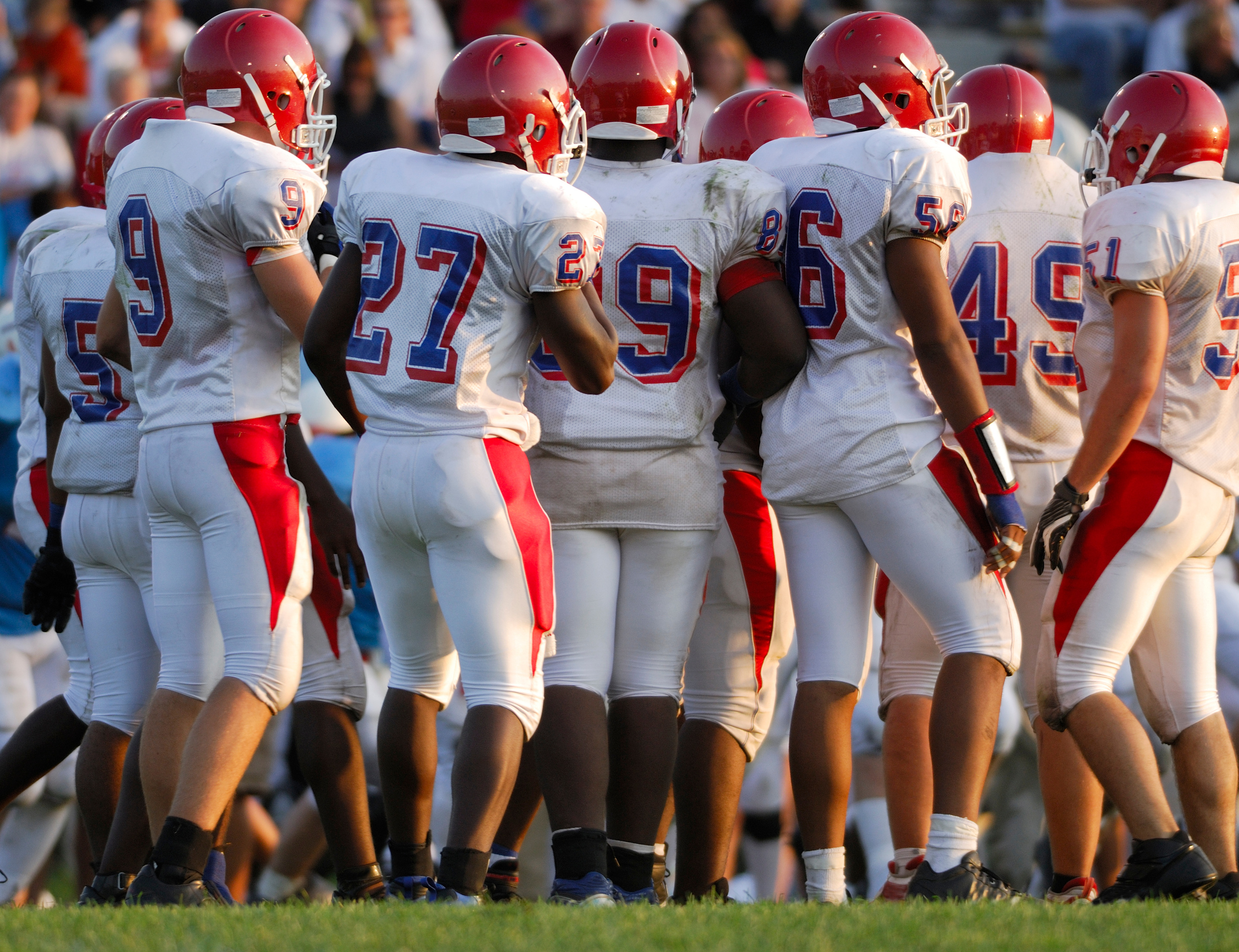
5.3
Families recognize the college-readiness skills acquired through extracurricular participation. In addition, families encourage students to participate in arts and athletic activities to improve these skills.
- Determine if families recognize the importance of extracurricular participation relative to college readiness and if they encourage their children to partake.
- Encourage invested families to consider helping to lead the family side of the partnership if they have the capacity.
- Incentivize families and students regarding extracurricular participation. See the Resources section for a list of incentive options.
- Conduct interviews and surveys to understand why families do not connect college readiness to extracurricular participation. Ensure you collect data from all family structures by being flexible, creative, and accommodating. Keep in mind that a disconnect may exist due to the school's culture, varying cultures in the community, or the overall school mission. Nonetheless, this information can guide the partnership's marketing plan.
- Work with community partners to determine how families not well connected to the school community feel about extracurricular participation relative to college readiness. Use this information to further develop the partnership's marketing plan.
5.4
All checks?
- If all the checklist items are accounted for, then your school is providing the necessary extracurricular offerings, and your community values extracurricular participation and its benefits. Proceed to Step 6 to ensure the administration, families, and the community value college readiness and further recognize its connection to extracurricular participation and family involvement.
- If you do not have all the checklist items accounted for, review the bulleted suggestions to help accomplish each task.
Step 6 College Readiness
Charting the Path to Success
Goals
Step 6 highlights the importance of college readiness. Your school must have a mission, vision, goals, and curriculum for college readiness that families can support. Furthermore, your school and the greater community must recognize and embrace the connection between college readiness, extracurricular participation, and family engagement (CR = EC + FE).
Checklist
The College Readiness Checklist ensures your school, families, and the community value college readiness and recognizes its connection to extracurricular participation and family engagement.


College Readiness Checklist
6.1
Your school has clear expectations and goals for college-readiness levels and standards.
- Create clear verbiage about desired college-readiness traits and how students can attain the skills. The skills should include accountability, determination, mental and emotional strength, motivation, organization skills, self-awareness, social skills, study skills, teamwork, time management, and work ethics.
- Create a “portrait of a graduate” with all stakeholders (staff, faculty, alums, current students, family members, and community members) to best understand your community’s college readiness expectations.
- Engage with alums to best understand how your school made them more college-ready.
- Research peer schools and their graduates to improve college readiness standards and expectations.
- Reevaluate the internal and external communication to best relay the college readiness expectations. Consider this information in relation to the partnership’s marketing plan.
6.2
Students from your school graduate college ready with the following skills: accountability, determination, mental and emotional strength, motivation, organization skills, self-awareness, social skills, study skills, teamwork, time management, and work ethics.
- Create measurables for college-readiness skills to track student success.
- Determine ways to incentivize students who acquire college-readiness skills. See the Resources section for a list of incentive options.

6.3
Your school, families, and the community recognize the connection between extracurriculars and family engagement relative to college readiness. In addition, they see value in students being college ready.
- Educate all stakeholders on the research-backed benefits of extracurricular participation to improve college readiness. See the Resources section for important research articles and sources.
- Determine key stakeholders who understand the connection of CR = EC + FE and are willing to help educate and empower others.
- Communicate the importance of family engagement to increase extracurricular participation and, as a result, college readiness.
- Include family stakeholders in the college search process and student course selection to better educate them on the CR = EC + FE.
- Create strong external communication regarding how students can acquire college-readiness skills through extracurricular participation.
6.4
All checks?
- If all the checklist items are accounted for, then your school, families, and the community value college readiness and recognize its connection to extracurricular participation and family engagement. Proceed to Step 7 to ensure a strong partnership pitch and leaders in place to roll out the program to the greater community.
- If you do not have all the checklist items accounted for, review the bulleted suggestions to help accomplish each task.

executing the partnership

Step 7 Creating the pitch
Crafting a Dynamic Connection
Goals
Step 7 focuses on constructing the partnership pitch to deliver to families and your school community. Your school must have internal and external commitment and support to accomplish this goal. This step includes identifying and securing leaders from families.
Checklist
The Creating the Pitch Checklist ensures your school has a strong partnership pitch and leaders in place to roll out the program to the greater community.

Creating the pitch CHECKlist
7.1
Teachers and staff at your school believe in the partnership’s goals.
- Secure teacher and staff commitment through educational professional development opportunities. These professional development sessions should include research-backed evidence for CR = EC + FE. See the Resources section for important research articles and sources. In addition, the sessions should inform them of how your school plans to incorporate the partnership’s goals into the school’s everyday operations.
- Identify key stakeholders to serve as leaders who can help facilitate the partnership with families and possibly other partners.
- Consider incentivizing staff leaders. See the Resources section for a list of incentive options.

7.2
There are key stakeholders on the family side who will be leaders for the partnership.
- Identify key stakeholders to serve as leaders who can help facilitate the partnership. These family stakeholders should include families whose children have found success with CR = EC + FE, those in parent group leadership positions, and families willing to contribute extra effort to help the community (carpooling, extra gear/supplies in their car, field trip chaperones, etc.).
- Consider incentivizing family leaders. See the Resources section for a list of incentive options.
7.3
All checks?
- If all the checklist items are accounted for, then your school has a strong partnership pitch and leaders in place to roll out the program to the greater community. Proceed to Step 8 to ensure you pitch the partnership effectively in a way that guarantees family and community commitment.
- If you do not have all the checklist items accounted for, review the bulleted suggestions to help accomplish each task.
Step 8 pitching
Engage Families and Ignite Community Support

Goals
Step 8 highlights pitching the partnership to families and the greater community. Your school must create a plan that includes programming, educational opportunities, and incentives to best mobilize the partnership.
Checklist
The Pitching Checklist ensures your school pitches the partnership effectively in a way that guarantees family and community commitment.
Your school is prepared to host educational opportunities for the entire community to learn about the benefits of the partnership and CR = EC + FE.
- Prepare and administer virtual and in-person presentations about the partnership. The presentations should include research-backed evidence demonstrating the importance of extracurricular participation and family engagement to cultivate college readiness. See the Resources section for important research articles and sources. In addition, consider using examples of previously successful students to convey a relatable message. Lastly, the presentations should include a draft of the partnership timeline and clear roles for school and family stakeholders. See Step 9 for more on roles and responsibilities.
- Mobilize school stakeholders to serve as leaders for the partnership and who are prepared to assist with and follow up on the educational sessions to the community on CR = EC + FE.
- Mobilize families and community stakeholders to serve as leaders for the partnership and who are prepared to support your school’s efforts to educate the community on CR = EC + FE.
- Ensure school leaders fully understand their student and family communities and cater their pitch and delivery methods to specific stakeholders. In addition, they should recognize when to expand the pitch and educational opportunities to community organizations to accommodate as many students as possible.
- Find ways to incentivize family attendance at your school’s presentations. See the Resources section for a list of incentive options.
8.2
All checks?
- If all the checklist items are accounted for, then your school can pitch the partnership effectively in a way that guarantees family and community commitment. Proceed to Step 9 to ensure your school can reach a consensus with the family community regarding the partnership and action plan.
- If you do not have all the checklist items accounted for, review the bulleted suggestions to help accomplish each task.
8.1
Pitching Checklist
Step 9 Finding consensus
Fostering Collaboration, Empowering Action
Goals
Step 9 emphasizes the need for consensus between your school and the family community regarding the partnership terms. The two sides must create an advisory board with equal representation to develop an action plan to execute the items featured in the pitch.
Checklist
The Finding Consensus Checklist ensures your school can reach a consensus with the family community regarding the partnership. In addition, it guarantees an action plan for stakeholders to execute the partnership.

Finding consensus Checklist
9.1
there is an advisory board in place to lead the partners.
- Form an advisory board from leaders of the two sides of the partnership. This advisory board should have equal representation from both sides and be able to reach a consensus on partnership topics. Additionally, the advisory board will designate stakeholders' roles and appoint other stakeholders after the two founding stakeholder groups identify the need for further social, political, and financial resources.
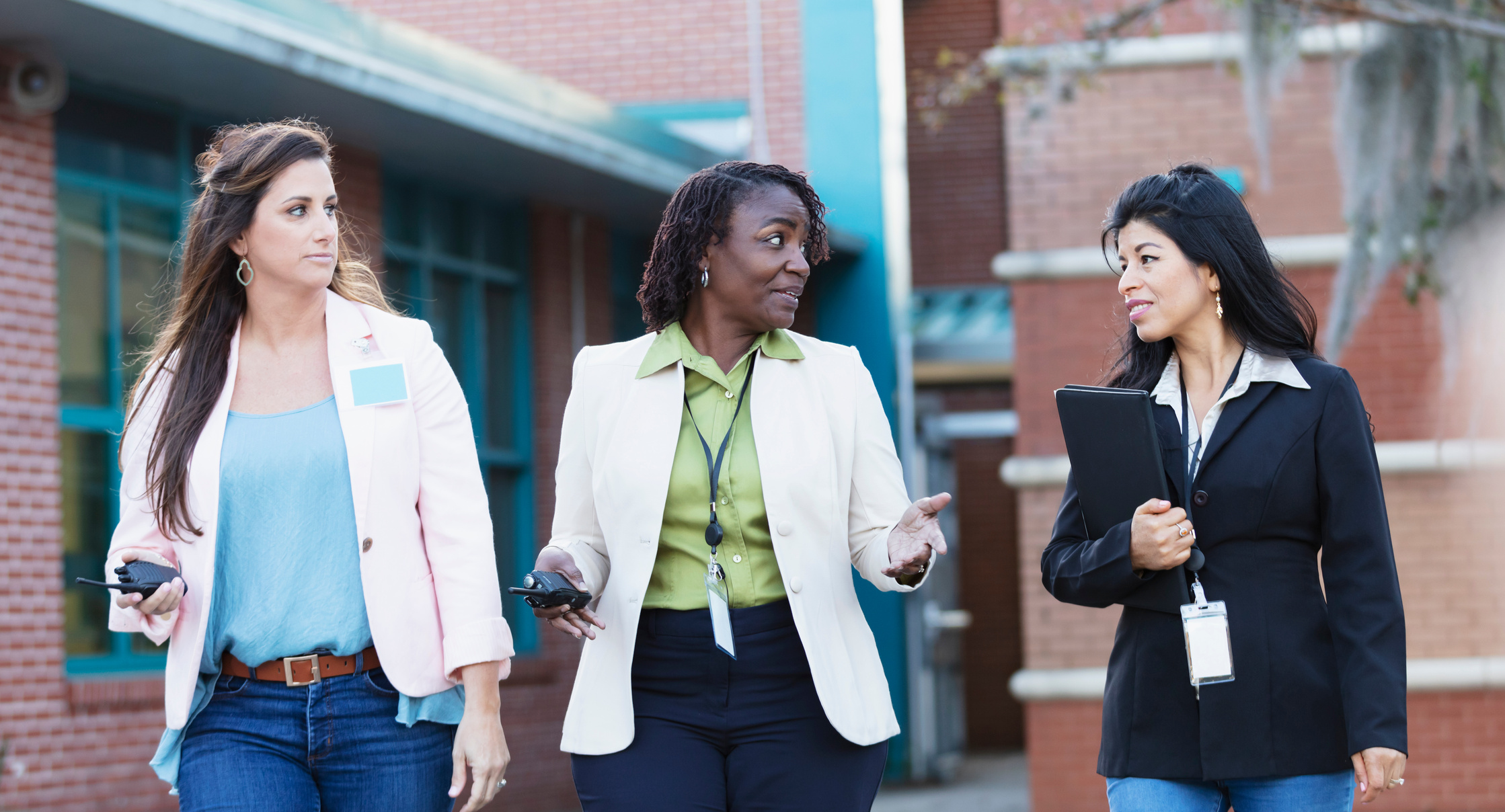

9.2
The Two sides agree on the partnership's mission, goals, and timeline.
- Confirm school leaders meet with family and community leaders to determine differences in the partnership’s philosophy and how the two sides can find a solution.
- Ensure school leaders reevaluate their student and family community to ensure they pitch the partnership in the most effective and accessible way.
- Create a timeline for completion that both sides feel is attainable and will hold the partners accountable.
- Consider using a boundary spanner to find a consensus between the two sides of the potential partnership.
9.3
The two sides understand their roles and responsibilities in the partnership as designated by the advisory board.
- Recognize that school leaders were responsible for honing the partnership's mission, assessing potential stakeholders and required skills, ensuring stakeholder inclusivity, exploring strategic alliances, and creating a pitch to potential family partners.
- Have the advisory board hold school leaders accountable for facilitating community educational sessions and internal and external school communication. In addition, school leaders are also responsible for finances and legal work if the partners do not employ an outside group.
- Have the advisory board hold family stakeholders accountable for spearheading the communication with and the organization of families to attend the school's educational sessions. In addition, family stakeholders are also responsible for using family communication channels to convey the benefits of arts and athletics relative to college readiness. Lastly, they should help build trust between the school and the family community through demonstrated commitment to the partnership.

9.4
There are systems in place for stakeholders to execute the partnership.
- Have the advisory board create an action plan to mobilize families to inspire their children to participate in extracurricular activities to boost college readiness. Action plan items can include more educational opportunities for the community on CR = EC + FE, family involvement in student course selection and the college process, student incentives for extracurricular participation, better communication about school offerings, etc.
- Have the advisory board create an evaluation plan to ensure the partnership’s long-term success. Evaluation methods should include surveys, interviews, student success data, etc. Consider using a third party to evaluate the partnership.
- Ensure your school is prepared for an influx of extracurricular participation and has options to accommodate as many students as possible.

9.5
All checks?
- If all the checklist items are accounted for, your school can reach a consensus with the family community regarding the partnership and have an action plan. Proceed to Step 10 to ensure the partners are properly progressing through the partnership by hitting their goals, building trust, and devising long-term plans for continued success.
- If you do not have all the checklist items accounted for, review the bulleted suggestions to help accomplish each task.
Step 10 Maintaining
Sustaining for Long-Term Growth and Development
Goals
Step 10 focuses on the advisory board maintaining the partnership's short-term success by ensuring the action plan is followed and that goals are hit. Furthermore, the advisory board must build mutual trust between the two sides and create a long-term plan if the partnership is successful in its first year.

Checklist
The Maintaining Checklist ensures the partners are properly progressing through the partnership by hitting their goals, building trust, and devising long-term plans for continued success.

Maintaining CHECKlist
10.1
The two sides have mutual trust, reach goals, and follow the partnership’s timeline.
- Have the advisory board consistently reevaluate the mutually developed action plan to determine if changes are required.
- Find ways to build more trust between the two sides. These methods should include additional meetings focused on empathy and shared goals to refocus the partners.
- Have the advisory board reassess the partnership's evaluation metrics.
- Consider using a boundary spanner to ensure the two sides hit goals and follow their mutually created timeline.
10.2
The Advisory board have a long-term plan to sustain the partnership.
- Evaluate your school’s current curricular offerings to determine the necessary changes to sustain the partnership.
- Find new incentives for students, families, and school stakeholders to increase commitment.
- Audit the partnership’s internal and external communication efforts, including the marketing plan. While there will be overlap from year to year, it is essential to continue innovating and cater to the contemporary family and community audience.
- Consider using a boundary spanner to ensure the two sides develop a long-term plan to sustain the partnership.

10.3
All checks?
- If all the checklist items are accounted for, then the partners are properly progressing through the partnership by hitting their goals, building trust, and devising long-term plans for continued success. Proceed to Step 11 to ensure stakeholders correctly evaluate their partnership by emphasizing the original goals outlined in Step 1.
- If you do not have all the checklist items accounted for, review the bulleted suggestions to help accomplish each task.
What SHOULD it look like?
A school that successfully follows this guide would exemplify a collaborative, inclusive, and supportive environment. It would actively engage with families to empower them to inspire students to participate in arts and athletics, enhancing their readiness for college. The school would recognize the significance of the 2015 reauthorization of the Elementary and Secondary Education Act, which highlighted family engagement and flexibility in standards. By leveraging this framework, the school would seek to establish a mutually beneficial partnership with all families, acknowledging their influential role in shaping students' educational trajectories. The partnership would follow the formula of College Readiness equals Extracurriculars plus Family Engagement (CR = EC + FE), underscoring the positive impact of family involvement in promoting extracurricular activities. Recognizing the value of arts and athletics participation, the school and its families would encourage students to explore these areas to achieve college readiness. The school would welcome this exploration by hosting arts and athletic offerings that cultivate contemporary college-readiness skills beyond the standard curriculum. By adhering to this comprehensive approach, the school would create an environment where engaged families collaborate with educators, ultimately motivating students to participate in extracurricular activities and enhancing their college readiness.
Step 11 Evaluation

Nurturing Excellence Through Continuous Improvement
Goals
Step 11 highlights the evaluation process for stakeholders to determine the partnership's success. Through evaluation, the advisory board can determine the best course of action and make improvements for upcoming years.
Checklist
The Evaluation Checklist ensures stakeholders properly evaluate their partnership by emphasizing the original goals outlined in Step 1.

47
evaluation
CHECKlist
11.1
The two sides executed the mutually drafted evaluation plan, identified the partnership's limitations, and understand how to overcome them.
- Have the advisory board reevaluate the evaluation plan mutually developed by the partners to determine if changes are required for future implementation.
- Rely on the advisory board to administer the evaluation plan, identify limitations, and provide solutions.
- Consider using a boundary spanner to ensure the two sides execute the evaluation plan and find ways to improve. In addition, to implement fair evaluation metrics for the advisory board.
11.2
Families understand the importance of extracurriculars relative to college readiness and their role in the process. Furthermore, families are more positively engaged with the school.
- Have the advisory board reevaluate the action plan mutually developed by the partners to determine what changes are required for future implementation.
- Determine additional family leaders and community partners to help facilitate a better understanding for families.
- Reconsider the marketing plan and how families engage with the material.
- Appoint new advisory board members to provide fresh insight into facilitating the partnership.
11.3
Students are participating in more extracurricular activities and are more college ready.
- Review how the partnership educates, motivates, and empowers families to encourage extracurricular participation.
- Determine additional family leaders and community partners to help with student outreach.
- Reconsider the marketing plan and how families engage with the material.
- Reexamine your school’s curricular offerings and assess if they match the students’ extracurricular interests.
- Evaluate yearly data to understand graduates’ extracurricular profiles relative to their college readiness.
- Reevaluate the college-readiness traits and skills that the school chose to focus on and incorporate into its curricula.
- Explore how families were engaging with their students at home and connecting about extracurricular participation.
11.4
All checks?
- If all the checklist items are accounted for, then the stakeholders are properly evaluating their partnership. Continue reviewing Steps 10 and 11 to ensure the partnership sustains and provides long-lasting results.
- If you do not have all the checklist items accounted for, review the bulleted suggestions to help accomplish each task.
Where do We go from here?
While this guide can be the answer to improving your students' college readiness, the benefit of a balanced approach to academics and extracurriculars is not a new and groundbreaking viewpoint. That said, with the steady rise of standardized curricula and testing, opportunities to encourage student choice and well-roundedness continue to shrink. In addition, there are very few resources to help create these options.
By making it to this point, you have provided your school and familes with the potential to help increase students' college-readiness levels. Your community has a school leader willing to explore creative options to improve its offerings and connect the community.
The Resources section of this guide provides checklist worksheets, suggested incentives, and reading lists that you can distribute to your staff without changes or edits.
This guide is meant to help all schools and communities. The resources featured can help you implement this partnership in a way that works best for you.

resources
Step 1 Worksheet
Mission, Vision, and Goals Checklist
1.1 Does our school's mission statement clearly outline expectations for family engagement and account for the ESEA 1965's guidelines for students' extracurricular involvement as a shared responsibility between schools and families?
If not, let's try the following:
- Creating or editing our school's mission, vision, and goals to outline expected family engagement, including the ESEA 1965 guidelines.
- Reevaluating how to best position and market our school's mission, vision, and goals to our family and local communities.
1.2 Does our school have a supplementary mission statement prioritizing positive and constructive family engagement rooted in diversity, equity, and inclusion (DEI)?
If not, let's try the following:
- Creating or editing a supplementary mission statement that prioritizes positive and constructive family engagement, while rooted in DEI.
1.3 Does our school have short- and long-term goals to improve family engagement?
If not, let's try the following:
- Creating or adjusting a strategic plan with short- and long-term goals associated with improving our school's family and community engagement efforts and opportunities.
page 1/2
Step 1 Worksheet
Mission, Vision, and Goals Checklist
1.4 Is our staff committed to increasing college-readiness levels via family engagement to improve extracurricular participation?
If not, let's try the following:
- Conducting professional development opportunities to educate our staff on the importance of the partnership in increasing college readiness. See the Resources section for important research articles and sources.
- Begin mobilizing staff for the pending partnership by incentivizing them with work-related benefits. These incentives could also extend outside of school through collaboration with community partners. See the Resources section for a list of incentive options.
- Conducting a pilot program with interested staff members who could potentially influence others to commit. The pilot program should focus on a student group, a single class, or even one grade of students instead of the entire high school.
- Creating a plan to regularly check in with staff about the project.
1.5 Are all the checklist items accounted for?
If yes, then our school has a mission, vision, goals, and initial staff commitment for the partnership. We can proceed to Step 2 to determine the necessary skills for the partnership's success.
If not, let's try the following:
- Reviewing the bulleted suggestions to help accomplish each task.
page 2/2
Step 2 Worksheet
Necessary Skills and Strategic Alliances Checklist
2.1 Does our school have the staff and resources to fill the following skill needs for the partnership: Financial, legal, internal communication, external communication, evaluation, and educational knowledge?
If not, let's try the following:
- Analyzing current staff, resources, potential partners, and existing partners to determine if they have the necessary skills for the partnership.
- Educating and incentivizing staff who can take on roles or learn to take on new roles.
- Considering reallocating budgets to accommodate new internal or external hires to fulfill the required skill needs, if possible.
2.2 Does our school have existing partnerships or potential partnerships to fill the following skill needs for the partnership: Financial, legal, internal communication, external communication, evaluation, and educational knowledge?
If not, let's try the following:
- Determining if current or potential partnerships can help satisfy the required skills the school staff may not have. In this case, institutes of higher education and community partners, such as Parent Associations, Parent Teacher Associations, community centers, and religious organizations, are likely candidates for strategic alliances. Potential community partners are especially helpful for schools with non-traditional families.
- Conducting outreach to current or potential partner organizations to fill needs.
- Looking to potential family partners to determine if they can fulfill the remaining skills required for the partnership.
- Considering a third party to handle specific tasks such as legal and financial. Sometimes, having a knowledgeable third party manage these tasks can be beneficial.
page 1/2
Step 2 Worksheet
Necessary Skills and Strategic Alliances Checklist
2.3 Are all the checklist items accounted for?
If yes, then our school has the existing resources and potential connections to fulfill the required skills for the partnership. We can proceed to Step 3 to confirm that our school understands the current landscape of our community and family population to ensure inclusivity within the partnership.
If not, let's try the following:
- Reviewing the bulleted suggestions to help accomplish each task.
page 2/2
Step 3 Worksheet
Diversity, Equity, and Inclusion Checklist
3.1 Does our school have a mission statement for diversity, equity, and inclusion (DEI) that encompasses all family and community members?
If not, let's try the following:
- Creating or reevaluating a DEI mission statement for our school to guide inclusivity efforts.
- Performing an equity audit on our school's current programming and communication efforts to determine how we can be more inclusive and reach as many families as possible.
- Creating additional promotional material for the partnership and informing the community of the partnership's DEI emphasis and desire to include all families.
3.2 Does our school take measures to be inclusive to all families?
If not, let's try the following:
- Enlisting the help of trusted family stakeholders to help facilitate engagement and serve as liaisons to underrepresented groups.
- Conducting an equity audit on our school's existing DEI protocols.
- Allocating resources, if possible, to create an internal DEI leadership position to reevaluate and update programming, curriculum, and communication.
page 1/2
Step 3 Worksheet
Diversity, Equity, and Inclusion Checklist
3.3 Does our school have a plan to market the partnership to every family structure in our community?
If not, let's try the following:
- Researching our school community's family structures to determine the target audiences for a marketing plan. These structures may include traditional vs. non-traditional, high-income vs. low-income, native English speakers vs. non-native English speakers, first-generation high school graduates vs. non-first-generation high school graduates, and families that include various races/genders/sexualities/disabilities/etc.
- Using data to determine if our school has certain student groups more or less involved in extracurriculars than others.
- Determining if our school has certain student groups that are more or less college ready than others.
- Researching if our school has certain family groups more or less involved with our school than others.
- Creating a marketing plan that best serves our school community's families.
- Engaging in community partnerships and relying on local organizations to help connect with families.
3.4 Are all the checklist items accounted for?
If yes, then our school understands the current landscape of our community and family population and can ensure inclusivity and accessibility within the partnership. We can proceed to Step 4 to ensure that our school engages families effectively to build mutual trust and a willingness to partake in the partnership.
If not, let's try the following:
- Reviewing the bulleted suggestions to help accomplish each task.
page 2/2
Step 4 Worksheet
Family Engagement Checklist
4.1 Are our school's families positively involved in school functions like classroom activities, school events, the college process, curriculum design, extracurricular activities, school operations, etc.?
If not, let's try the following:
- Creating clear rules and expectations for families to engage with our school. Our mission to have more positive and constructive involvement should drive these guidelines.
- Providing educational opportunities for families around the engagement mission, rules, and expectations to prepare them for success.
- Finding ways to incentivize positive family engagement. See the Resources section for a list of incentive options.
- Recognizing families who are leaders and examples of how to be positively involved in the school community.
- Determining how family engagement varies based on family demographic and structure. Consider this data in relation to the partnership's marketing plan.
4.2 Does our school conduct regular outreach to families to increase and facilitate positive engagement?
If not, let's try the following:
- Determining if our school provides enough engagement opportunities or if families are not taking advantage.
- Analyzing current outreach delivery, methods, and content to determine what works for our school relative to our family community.
- Continuing to find ways to incentivize positive family engagement. See the Resources section for a list of incentive options.
- Determining the faculty and staff leading the charge for positive outreach and communication and incentivizing them to continue. See the Resources section for a list of incentive options.
- Partnering with local community organizations to help increase and facilitate positive engagement from families.
- Reevaluating our school's overall external communication plan in relation to the partnership's marketing plan to incorporate more opportunities for positive family engagement.
page 1 /3
Step 4 Worksheet
Family Engagement Checklist
4.3 Is there trust between our school and our family community?
If not, let's try the following:
- Reevaluating current relationships and conducting updated outreach with the engagement mission, rules, and expectations.
- Developing or nurturing trust through proper communication channels between our school and families.
- Incentivizing long-lasting support from families. See the Resources section for a list of incentive options.
- Partnering with local community organizations to help increase trust between our school and our families.
- Determining how trust levels vary based on family demographic and structure. Consider this data in relation to the partnership's marketing plan.
4.4 Are our families willing to potentially partner with our school to increase college readiness through extracurricular participation?
If not, let's try the following:
- Developing or nurturing trust through proper communication channels between our school and families to find willing partners.
- Determining the families who could partner with our school to increase college readiness through extracurricular participation. In addition, incentivize these families to test the partnership. See the Resources section for a list of incentive options.
- Developing or nurturing trust through proper communication channels between our school and parent groups such as the Parent Association and/or Parent Teacher Association to eventually find willing partners.
- Looking to the Parent Association or Parent Teacher Associate to find families and individuals who could potentially partner with our school to increase college readiness through extracurricular participation.
- Partnering with local community organizations to help increase and facilitate positive family engagement.
page 2/3
Step 4 Worksheet
Family Engagement Checklist
4.5 Are all the checklist items accounted for?
If yes, then our school is engaging our families effectively to build mutual trust and a willingness to partake in the partnership. We can proceed to Step 5 to ensure that our school provides the necessary extracurricular offerings and that our school and community value extracurricular participation and its benefits.
If not, let's try the following:
- Reviewing the bulleted suggestions to help accomplish each task.
page 3/3
Step 5 Worksheet
Extracurricular Activities Checklist
5.1 Does our school have a mission for extracurricular activities within the greater curriculum?
If not, let's try the following:
- Reevaluating our curriculum's mission and determining how extracurriculars fit into the larger plan.
- Ensuring our college counseling/guidance teams understand the importance of extracurricular offerings relative to college readiness.
- If possible, review our school's budget to ensure there are sufficient funds to support extracurricular activities within the greater curriculum.
5.2 Does our school offer a variety of in-school and after-school arts and athletics activities and have a plan to improve overall extracurricular offerings and participation?
If not, let's try the following:
- Reevaluating our school's long-term goals for extracurriculars within the greater curriculum. In addition, ensuring they are measurable and attainable.
- Determining additional extracurricular needs to improve offerings, limit barriers to access, and increase overall participation.
- Reviewing our school's budget to find ways to improve extracurricular offerings, if possible.
- Recognizing how strategic partners can help bolster extracurricular offerings and improve participation.
- Reevaluating our school's internal and external communication plans regarding extracurricular offerings.
- Soliciting stakeholder feedback to continue improving offerings and participation based on our community's needs.
- Determining ways to incentivize student participation in extracurricular activities. See the Resources section for a list of incentive options.
page 1/2
Step 5 Worksheet
Extracurricular Activities Checklist
5.3 Do our families recognize the college-readiness skills acquired through extracurricular participation? Do our families encourage students to participate in arts and athletic activities to improve these skills?
If not, let's try the following:
- Determining if families recognize the importance of extracurricular participation relative to college readiness and encourage their children to partake. Encourage these families to consider helping lead the family side of the partnership if they have the capacity.
- Incentivizing families and students regarding extracurricular participation. See the Resources section for a list of incentive options.
- Conducting interviews and surveys to understand why our families do not connect college readiness to extracurricular participation. Ensure we collect data from all family structures by being flexible, creative, and accommodating. A disconnect could be due to the school's culture, different cultures in the community, or the overall school mission. Nonetheless, this information can guide the partnership's marketing plan.
- Working with community partners to determine how our families who are not well connected to our school community feel about extracurricular participation relative to college readiness. Use this information to further develop the partnership's marketing plan.
5.4 Are all the checklist items accounted for?
If yes, then our school provides the necessary extracurricular offerings, and our community values extracurricular participation and its benefits. We can proceed to Step 6 to ensure that our administration, families, and the community value college readiness and further recognize its connection to extracurricular participation and family involvement.
If not, let's try the following:
- Reviewing the bulleted suggestions to help accomplish each task.
page 2/2
Step 6 Worksheet
College Readiness Checklist
6.1 Does our school have clear expectations and goals for college-readiness levels and standards?
If not, let's try the following:
- Creating clear verbiage about desired college-readiness traits and how students can attain the skills. The skills should include accountability, determination, mental and emotional strength, motivation, organization skills, self-awareness, social skills, study skills, teamwork, time management, and work ethics.
- Creating a "portrait of a graduate" with all stakeholders (staff, faculty, alums, current students, family members, and community members) to best understand our community's college-readiness expectations.
- Engaging with alums to best understand how our school made them more college ready.
- Researching peer schools and their graduates to improve college readiness standards and expectations.
- Reevaluating the internal and external communications to best relay the college readiness expectations. Consider this information in relation to the partnership's marketing plan.
6.2 Do our students graduate college ready with the following skills: accountability, determination, mental and emotional strength, motivation, organization skills, self-awareness, social skills, study skills, teamwork, time management, and work ethics?
If not, let's try the following:
- Creating measurables for college-readiness skills to track student success.
- Determining ways to incentivize students who acquire college-readiness skills. See the Resources section for a list of incentive options.
page 1/2
Step 6 Worksheet
College Readiness Checklist
6.3 Do our school, families, and community recognize the connection between extracurriculars and family engagement relative to college readiness? Do they see value in students being college ready?
If not, let's try the following:
- Educating all stakeholders on the research-backed benefits of extracurricular participation to improve college readiness. See the Resources section for important research articles and sources.
- Determining key stakeholders who understand the connection of CR = EC + FE and are willing to help educate and empower others.
- Communicating the importance of family engagement to increase extracurricular participation and, as a result, college readiness.
- Including family stakeholders in the college search process and student course selection to better educate them on the CR = EC + FE.
- Creating strong external communication regarding how students can acquire college-readiness skills through extracurricular participation.
6.4 Are all the checklist items accounted for?
If yes, then our school, families, and community value college readiness and recognize its connection to extracurricular participation and family engagement. We can proceed to Step 7 to ensure a strong partnership pitch and leaders in place to roll out the program to the greater community.
If not, let's try the following:
- Reviewing the bulleted suggestions to help accomplish each task.
page 2/2
Step 7 Worksheet
Creating the Pitch Checklist
7.1 Do our teachers and staff believe in the partnership's goals?
If not, let's try the following:
- Securing teacher and staff commitment through educational professional development opportunities. These professional development sessions should include research-backed evidence for CR = EC + FE. See the Resources section for important research articles and sources. In addition, the sessions should inform them of how our school plans to incorporate the partnership's goals into our school's everyday operations.
- Identifying key stakeholders to serve as leaders who can help facilitate the partnership with our families and possibly other partners.
- Considering incentivizing staff leaders. See the Resources section for a list of incentive options.
7.2 Are there key stakeholders on the family side who will be leaders for the partnership?
If not, let's try the following:
- Identifying key stakeholders to serve as leaders who can help facilitate the partnership. These family stakeholders should include families whose children have found success with CR = EC + FE, those in parent group leadership positions, and families willing to contribute extra effort to help the community (carpooling, extra gear/supplies in their car, field trip chaperones, etc.).
- Considering incentivizing family leaders. See the Resources section for a list of incentive options.
7.3 Are all the checklist items accounted for?
If yes, then our school has a strong partnership pitch and leaders in place to roll out the program to the greater community. We can proceed to Step 8 to ensure we pitch the partnership effectively in a way that guarantees family and community commitment.
If not, let's try the following:
- Reviewing the bulleted suggestions to help accomplish each task.
page 1/1
Step 8 Worksheet
Pitching Checklist
8.1 Is our school prepared to host educational opportunities for the entire community to learn about the benefits of the partnership and CR = EC + FE?
If not, let's try the following:
- Preparing and administering virtual and in-person presentations about the partnership. The presentations should include research-backed evidence demonstrating the importance of extracurricular participation and family engagement to cultivate college readiness. See the Resources section for important research articles and sources. In addition, we should use examples of our previously successful students to convey a related message. Lastly, the presentations should include a draft of a partnership timeline and clear roles for school and family stakeholders. See Step 9 for more on roles and responsibilities.
- Mobilizing our staff members to serve as leaders for the partnership and who are prepared to assist with and follow up on the educational sessions to our community on CR = EC + FE.
- Mobilizing our families and community stakeholders to serve as leaders for the partnership and who are prepared to support our school's efforts to educate our community on CR = EC + FE.
- Ensuring our school's leaders fully understand our student and family communities and cater their pitch and delivery methods to specific stakeholders. In addition, they should recognize when to expand the pitch and educational opportunities to community organizations to accommodate as many students as possible.
- Finding ways to incentivize family attendance at our school's presentations. See the Resources section for a list of incentive options.
8.2 Are all the checklist items accounted for?
If yes, then our school can pitch the partnership effectively in a way that guarantees family and community commitment. We can proceed to Step 9 to ensure that our school can reach a consensus with our family community regarding the partnership and action plan.
If not, let's try the following:
- Reviewing the bulleted suggestions to help accomplish each task.
page 1/1
Step 9 Worksheet
Finding Consensus Checklist
9.1 Is there an advisory board in place to lead the partners?
If not, let's try the following:
- Forming an advisory board from leaders of the two sides of the partnership. This advisory board should have equal representation from both sides and be able to reach a consensus on partnership topics. Additionally, the advisory board will designate roles and appoint other stakeholders after the two founding stakeholder groups identify the need for further social, political, and financial resources.
9.2 Do the two sides agree on the partnership's mission, goals, and timeline?
If not, our advisory board should try the following:
- Confirming our school leaders meet with our family and community leaders to determine differences in the partnership's philosophy and how the two sides can find a solution.
- Ensuring our school leaders reevaluate our student and family community to ensure they pitch the partnership in the most effective and accessible way.
- Creating a timeline for completion that both sides feel is attainable and will hold the partners accountable.
- Considering using a boundary spanner to find a consensus between the two sides of the potential partnership.
page 1/3
Step 9 Worksheet
Finding Consensus Checklist
9.3 Do the two sides understand their roles and responsibilities in the partnership as designated by the advisory board?
If not, our advisory board should try the following:
- Recognizing that school leaders were responsible for honing the partnership's mission, assessing potential stakeholders and required skills, ensuring stakeholder inclusivity, exploring strategic alliances, and creating a pitch to potential family partners.
- Holding school leaders accountable for facilitating community educational sessions and internal and external school communication. In addition, school leaders are also responsible for finances and legal work if the partners do not employ an outside group.
- Holding family stakeholders accountable for spearheading the communication with and the organization of families to attend the school's educational sessions. In addition, family stakeholders are also responsible for using family communication channels to convey the benefits of arts and athletics relative to college readiness. Lastly, they should help build trust between the school and the family community through demonstrated commitment to the partnership.
9.4 Are there systems in place for stakeholders to execute the partnership?
If not, our advisory board should try the following:
- Creating an action plan to mobilize our families to inspire their children to participate in extracurricular activities to boost college readiness. Action plan items can include more educational opportunities for our community on CR = EC + FE, family involvement in student course selection and the college process, student incentives for extracurricular participation, better communication about school offerings, etc.
- Creating an evaluation plan to ensure the partnership's long-term success. Evaluation methods should include surveys, interviews, student success data, etc. Consider using a third party to evaluate the partnership.
- Ensuring our school prepares for an influx of extracurricular participation and has options to accommodate as many students as possible.
page 2/3
Step 9 Worksheet
Finding Consensus Checklist
9.5 Are all the checklist items accounted for?
If yes, then our school can reach a consensus with our family community regarding the partnership and have an action plan. We can proceed to Step 10 to ensure the partners are properly progressing through the partnership by hitting their goals, building trust, and devising long-term plans for continued success.
If not, let's try the following:
- Reviewing the bulleted suggestions to help accomplish each task.
page 3/3
Step 10 Worksheet
Maintaining Checklist
10.1 Do the two sides have mutual trust, reach goals, and follow the partnership's timeline?
If not, our advisory board should try the following:
- Consistently reevaluate the action plan mutually developed by the partners to determine if changes are required.
- Finding ways to build more trust between the two sides. These methods should include additional meetings focused on empathy and shared goals to refocus the partners.
- Reassessing the partnership's evaluation metrics.
- Considering using a boundary spanner to ensure the two sides hit goals and follow their mutually created timeline.
10.2 Does the advisory board have a long-term plan to sustain the partnership?
If not, our advisory board should try the following:
- Evaluating our school's current curricular offerings to determine the necessary changes to sustain the partnership.
- Finding new incentives for students, families, and school stakeholders to increase commitment.
- Auditing the partnership's internal and external communication efforts, including the marketing plan. While there will be overlap from year to year, it is essential to continue innovating and cater to the contemporary family and community audience.
- Considering using a boundary spanner to ensure the two sides develop a long-term plan to sustain the partnership.
10.3 Are all the checklist items accounted for?
If yes, then the partners are properly progressing through the partnership by hitting their goals, building trust, and devising long-term plans for continued success. We can proceed to Step 11 to ensure stakeholders correctly evaluate their partnership by emphasizing the original goals outlined in Step 1.
If not, our advisory board should try the following:
- Reviewing the bulleted suggestions to help accomplish each task.
page 1/1
Step 11 Worksheet
Evaluation Checklist
11.1 Did the two sides execute the mutually drafted evaluation plan, identify the partnership's limitations, and understand how to overcome them?
If not, our advisory board should try the following:
- Reevaluating the evaluation plan mutually developed by the partners to determine if changes are required.
- Administering the evaluation plan to identify limitations and provide solutions.
- Considering using a boundary spanner to ensure the two sides execute the evaluation plan and find ways to improve. In addition, to provide fair evaluation metrics for the advisory board.
11.2 Do our families understand the importance of extracurriculars relative to college readiness and their role in the process? Furthermore, are families more positively engaged with the school?
If not, our advisory board should try the following:
- Reevaluating the action plan mutually developed by the partners to determine what changes are required.
- Determining additional family leaders and community partners to help facilitate a better understanding for families.
- Reconsidering the marketing plan and how families engage with the material.
- Appointing new advisory board members to provide new insight into facilitating the partnership.
page 1/2
Step 11 Worksheet
Evaluation Checklist
11.3 Are our students participating in more extracurricular activities and are more college ready?
If not, our advisory board should try the following:
- Reviewing how the partnership educates, motivates, and empowers our families to encourage extracurricular participation.
- Determining additional family leaders and community partners to help with student outreach.
- Reconsidering the marketing plan and how families engage with the material.
- Reexamining our school's curricular offerings and assessing if they match our students' extracurricular interests.
- Evaluating yearly data to understand graduates' extracurricular profiles relative to their college readiness.
- Reevaluating the college-readiness traits and skills our school chose to focus on and incorporating them into our curricula.
- Exploring how families were engaging with their students at home and connecting about extracurricular participation.
11.4 Are all the checklist items accounted for?
If yes, then the stakeholders are properly evaluating the partnership. Continue reviewing Steps 10 and 11 to ensure the partnership sustains and provides long-lasting results.
If not, our advisory board should try the following:
- Reviewing the bulleted suggestions to help accomplish each task.
page 2/2
Suggested
incentives
This list of suggested incentives is a springboard for finding ways to motivate and reward school staff, families, and students. Not all incentives may apply, and this list is not exhaustive.
Staff Incentives:
- Stipends
- Additional personal, sick, or vacation days
- More favorable teaching schedule
- Adjusted responsibilities
- Extra prep period(s)
- Decreased teaching load
- Reduced extracurricular duties
- Decreased administrative work
- Community partnership benefits
- Discounts at local establishments
- Gift cards to local establishments
Family Incentives:
- Early class registration for students
- Reserved seats at graduation
- Extra tickets to major school events
- Special parking spots
- Community partnership benefits
- Discounts at local establishments
- Gift cards to local establishments
Student Incentives:
- Early class registration
- Reserved seats at graduation
- Extra tickets to major school events
- Special parking spots
- Additional student privileges
- Can leave the school for lunch
- Can drive a car to and from school
- Can have a car at school
- Exempt from a study hall
- Community partnership benefits
- Discounts at local establishments
- Gift cards to local establishments
page 1/1
Suggested
Reading list
This suggested reading list is a helpful start to educating school staff, families, and students on CR = EC + FE and the importance of partnering. Note that this list is not exhaustive.
College Readiness Sources:
Bettinger, Eric P., and Bridget T. Long. "Addressing the Needs of Underprepared Students in Higher Education: Does College Remediation Work?" Journal of Human Resources 44, no. 3 (2009): 736–771. https://doi.org/10.3368/jhr.44.3.736.
Byrd, Kathleen L., and Ginger MacDonald. "Defining College Readiness from the Inside Out: First-Generation College Student Perspectives." Community College Review 33, no. 1 (2005): 22–37. https://doi.org/10.1177/009155210503300102.
Duncheon, Julia C., and Jair Muñoz. "Examining Teacher Perspectives on College Readiness in an Early College High School Context." American Journal of Education 125, no. 3 (2019): 453–478. https://doi.org/10.1086/702731.
Gaertner, Matthew N., and Katie L. McClarty. "Performance, Perseverance, and the Full Picture of College Readiness." Educational Measurement: Issues and Practice 34, no. 2 (2015): 20–33. https://doi.org/10.1111/emip.12066.
Jackson, Jacob, and Michal Kurlaender. "College Readiness and College Completion at Broad Access Four-Year Institutions." American Behavioral Scientist 58, no. 8 (2014): 947–971. https://doi.org/10.1177/0002764213515229.
Jansen, Ellen P. W. A., and Jacques van der Meer. "Ready for University? A Cross-National Study of Students’ Perceived Preparedness for University." Australian Educational Researcher 39, no. 1 (2012): 1–16. https://doi.org/10.1007/s13384-011-0044-6.
page 1/4
Suggested
Reading list
Extracurricular Activities Sources:
Long, Roxanne. "Protect Students’ Educational Futures Through Social Capital Opportunities in Sport and Non-Sport Extracurricular Activities." Administrative Issues Journal: Connecting Education, Practice, and Research 10, no. 1 (2020): 1–15. https://doi.org/10.5929/2020.10.1.1
Neely, Stephen R., and Elizabeth Vaquera. "Making It Count: Breadth and Intensity of Extracurricular Engagement and High School Dropout." Sociological Perspectives 60, no. 6 (2017): 1039–1062. https://doi.org/10.1177/0731121417700114
Ngai, Serin. "Painting over the Arts: How the No Child Left Behind Act Fails to Provide Children with a High-Quality Education." Seattle Journal for Social Justice 4, no. 2 (2006): 657–686. https://digitalcommons.law.seattleu.edu/sjsj/vol4/iss2/37
PAGE 2/4
Suggested
Reading list
Family Engagement Sources:
Anderson, Jennifer C., Jeanne B. Funk, Robert Elliott, and Peg H. Smith. "Parental Support and Pressure and Children’s Extracurricular Activities: Relationships with Amount of Involvement and Affective Experience of Participation." Journal of Applied Developmental Psychology 24, no. 2 (2003): 241–257. https://doi.org/10.1016/S0193-3973(03)00046-7
Hong, Sehee, and Hsiu-Zu Ho. "Direct and Indirect Longitudinal Effects of Parental Involvement on Student Achievement: Second-Order Latent Growth Modeling Across Ethnic Groups." Journal of Educational Psychology 97, no. 1 (2005): 32–42. https://doi.org/10.1037/0022-0663.97.1.32
Hornby, Garry, and Rayleen Lafaele. "Barriers to Parental Involvement in Education: An Explanatory Model." Educational Review 63, no. 1 (2011): 37–52. https://doi.org/10.1080/00131911.2010.488049
Huebner, Angela J., and Jay A. Mancini. "Shaping Structured Out-of-School Time Use Among Youth: The Effects of Self, Family, and Friend." Journal of Youth and Adolescence 32, no. 6 (2003): 453–463. https://doi.org/10.1023/A:1025990419215
Kremer-Sadlik, Tamar, Carolina Izquierdo, and Marilena Fatigante. "Making Meaning of Everyday Practices: Parents’ Attitudes Toward Children’s Extracurricular Activities in the United States and in Italy." Anthropology and Education Quarterly 41, no. 1 (2010): 35–54. https://doi.org/10.1111/j.1548-1492.2010.01066.x
LaRocque, Michelle, Ira Kleiman, and Sharon M. Darling. "Parental Involvement: The Missing Link in School Achievement." Preventing School Failure 55, no. 3 (2011): 115–122. https://doi.org/10.1080/10459880903472876
page 3/4
Suggested
Reading list
Partnership Sources:
Brandstetter, Regina, Han de Bruijn, Marion Byrne, Hélène Deslauriers, Michael Förschner, Jana Machačová, Anna Orologa, and Anette Scoppetta. Successful Partnerships: A Guide. Vienna: OECD/LEED, 2006. https://www.oecd.org/cfe/leed/36279186.pdf
Dhillon, Jaswinder K. "Senior Managers’ Perspectives of Leading and Managing Effective, Sustainable and Successful Partnerships." Educational Management, Administration & Leadership 41, no. 6 (2013): 736–750. https://doi.org/10.1177/1741143213494186
Hess, Frederick M., and Daniel K. Lautzenheiser. "Putting the Punch in Parent Power." Education Outlook 5 (2012): 1-7. www.aei.org/publication/putting-the-punch-in-parent-power/
Miksza, Peter. "Arts Education Advocacy: The Relative Effects of School-Level Influences on Resources for Arts Education." Arts Education Policy Review 114, no. 1 (2013): 25–32. https://doi.org/10.1080/10632913.2013.744245
page 4/4

REFERENCES
REFERENCES
ENDNOTES
1. Roxanne Long, "Protect Students’ Educational Futures Through Social Capital Opportunities in Sport and Non-Sport Extracurricular Activities," Administrative Issues Journal: Connecting Education, Practice, and Research 10, no. 1 (2020): 7-8, https://doi.org/10.5929/2020.10.1.1.; Stephen R. Neely and Elizabeth Vaquera, "Making It Count: Breadth and Intensity of Extracurricular Engagement and High School Dropout." Sociological Perspectives 60, no. 6 (2017): 1053-1054, https://doi.org/10.1177/0731121417700114.; Serin Ngai, "Painting over the Arts: How the No Child Left Behind Act Fails to Provide Children with a High-Quality Education," Seattle Journal for Social Justice 4, no. 2 (2006): 657, https://digitalcommons.law.seattleu.edu/sjsj/vol4/iss2/37.
2. Jaswinder K. Dhillon, "Senior Managers’ Perspectives of Leading and Managing Effective, Sustainable and Successful Partnerships," Educational Management, Administration & Leadership 41, no. 6 (2013): 736, https://doi.org/10.1177/1741143213494186.; Frederick M. Hess and Daniel K. Lautzenheiser, "Putting the Punch in Parent Power," Education Outlook 5 (2012): 1, www.aei.org/publication/putting-the-punch-in-parent-power/.; Michelle LaRocque, Ira Kleiman, and Sharon M. Darling. "Parental Involvement: The Missing Link in School Achievement," Preventing School Failure 55, no. 3 (2011): 115, https://doi.org/10.1080/10459880903472876.; Peter Miksza, "Arts Education Advocacy: The Relative Effects of School-Level Influences on Resources for Arts Education," Arts Education Policy Review 114, no. 1 (2013): 30, https://doi.org/10.1080/10632913.2013.744245.
3. Jennifer C. Anderson et al., "Parental Support and Pressure and Children’s Extracurricular Activities: Relationships with Amount of Involvement and Affective Experience of Participation," Journal of Applied Developmental Psychology 24, no. 2 (2003): 252, https://doi.org/10.1016/S0193-3973(03)00046-7.; Kathleen L. Byrd and Ginger MacDonald, "Defining College Readiness from the Inside Out: First-Generation College Student Perspectives," Community College Review 33, no. 1 (2005): 30, https://doi.org/10.1177/009155210503300102.; Angela J. Huebner and Jay A. Mancini, "Shaping Structured Out-of-School Time Use Among Youth: The Effects of Self, Family, and Friend," Journal of Youth and Adolescence 32, no. 6 (2003): 461, https://doi.org/10.1023/A:1025990419215.; Suniya S. Luthar, Karen A. Shoum, and Pamela J. Brown, "Extracurricular Involvement Among Affluent Youth: A Scapegoat for 'Ubiquitous Achievement Pressures'?," Developmental Psychology 42, no. 3 (2006): 595, https://doi.org/10.1037/0012-1649.42.3.583.
4. Eric P. Bettinger and Bridget T. Long, "Addressing the Needs of Underprepared Students in Higher Education: Does College Remediation Work?," Journal of Human Resources 44, no. 3 (2009): 736, https://doi.org/10.3368/jhr.44.3.736.; Byrd and MacDonald, "Defining College Readiness from the Inside Out," 22.; Julia C. Duncheon and Jair Muñoz, "Examining Teacher Perspectives on College Readiness in an Early College High School Context," American Journal of Education 125, no. 3 (2019): 453, https://doi.org/10.1086/702731.; Jacob Jackson and Michal Kurlaender, "College Readiness and College Completion at Broad Access Four-Year Institutions," American Behavioral Scientist 58, no. 8 (2014): 947, https://doi.org/10.1177/0002764213515229.
5. Every Student Succeeds Act, 20 U.S.C. § 6301 (2015). https://www.congress.gov/bill/114th-congress/senate-bill/1177.
page 1/3
REFERENCES
ENDNOTES
6. Byrd and MacDonald, "Defining College Readiness from the Inside Out," 30.; Matthew N. Gaertner and Katie L. McClarty, "Performance, Perseverance, and the Full Picture of College Readiness," Educational Measurement: Issues and Practice 34, no. 2 (2015): 25, https://doi.org/10.1111/emip.12066.; Long, "Protect Students’ Educational Futures," 7-8.; Neely and Vaquera, "Making It Count," 1053-1054.
7. Byrd and MacDonald, "Defining College Readiness from the Inside Out," 28.; Ellen P. W. A. Jansen and Jacques van der Meer, "Ready for University? A Cross-National Study of Students’ Perceived Preparedness for University," Australian Educational Researcher 39, no. 1 (2012): 6, https://doi.org/10.1007/s13384-011-0044-6.
8. Bettinger and Long, "Addressing the Needs of Underprepared Students," 736.; Byrd and MacDonald, "Defining College Readiness from the Inside Out," 22.; Duncheon and Muñoz, "Examining Teacher Perspectives," 453–454.; Jackson and Kurlaender, "College Readiness and College Completion," 947.
9. Jackson and Kurlaender, "College Readiness and College Completion," 948.
10. Jansen and van der Meer, "Ready for University?," 2.
11. Byrd and MacDonald, "Defining College Readiness from the Inside Out," 32.
12. Long, "Protect Students’ Educational Futures," 7-8.; Neely and Vaquera, "Making It Count," 1053-1054.
13. Ibid.
14. Jackson and Kurlaender, "College Readiness and College Completion," 966.
15. Long, "Protect Students’ Educational Futures," 7-8.
16. Neely and Vaquera, "Making It Count," 1053-1054.
17. Anderson et al., "Parental Support and Pressure," 252.; Sehee Hong and Hsiu-Zu Ho, "Direct and Indirect Longitudinal Effects of Parental Involvement on Student Achievement: Second-Order Latent Growth Modeling Across Ethnic Groups," Journal of Educational Psychology 97, no. 1 (2005): 40, https://doi.org/10.1037/0022-0663.97.1.32.; Garry Hornby and Rayleen Lafaele, "Barriers to Parental Involvement in Education: An Explanatory Model," Educational Review 63, no. 1 (2011): 37, https://doi.org/10.1080/00131911.2010.488049.; Tamar Kremer-Sadlik, Carolina Izquierdo, and Marilena Fatigante, "Making Meaning of Everyday Practices: Parents’ Attitudes Toward Children’s Extracurricular Activities in the United States and in Italy," Anthropology and Education Quarterly 41, no. 1 (2010): 36, https://doi.org/10.1111/j.1548-1492.2010.01066.x.; LaRocque, Kleiman, and Darling. "Parental Involvement," 115.
18. Long, "Protect Students’ Educational Futures," 7-8.; Neely and Vaquera, "Making It Count," 1053-1054.
page 2/3
REFERENCES
ENDNOTES
19. Anderson et al., "Parental Support and Pressure," 252.; Hong and Ho, "Direct and Indirect Longitudinal Effects," 40.; Hornby and Lafaele, "Barriers to Parental Involvement," 37.; Kremer-Sadlik, Izquierdo, and Fatigante, "Making Meaning of Everyday Practices," 36.; LaRocque, Kleiman, and Darling. "Parental Involvement," 115.
page 3/3
REFERENCES
bibliography
Anderson, Jennifer C., Jeanne B. Funk, Robert Elliott, and Peg H. Smith. "Parental Support and Pressure and Children’s Extracurricular Activities: Relationships with Amount of Involvement and Affective Experience of Participation." Journal of Applied Developmental Psychology 24, no. 2 (2003): 241–257. https://doi.org/10.1016/S0193-3973(03)00046-7.
Bettinger, Eric P., and Bridget T. Long. "Addressing the Needs of Underprepared Students in Higher Education: Does College Remediation Work?" Journal of Human Resources 44, no. 3 (2009): 736–771. https://doi.org/10.3368/jhr.44.3.736.
Byrd, Kathleen L., and Ginger MacDonald. "Defining College Readiness from the Inside Out: First-generation college student perspectives." Community College Review 33, no. 1 (2005): 22–37. https://doi.org/10.1177/009155210503300102.
Dhillon, Jaswinder K. "Senior Managers’ Perspectives of Leading and Managing Effective, Sustainable and Successful Partnerships." Educational Management, Administration & Leadership 41, no. 6 (2013): 736–750. https://doi.org/10.1177/1741143213494186.
Duncheon, Julia C., and Jair Muñoz. "Examining Teacher Perspectives on College Readiness in an Early College High School Context." American Journal of Education 125, no. 3 (2019): 453–478. https://doi.org/10.1086/702731.
Every Student Succeeds Act, 20 U.S.C. § 6301 (2015). https://www.congress.gov/bill/114th-congress/senate-bill/1177.
Gaertner, Matthew N., and Katie L. McClarty. "Performance, Perseverance, and the Full Picture of College Readiness." Educational Measurement: Issues and Practice 34, no. 2 (2015): 20–33. https://doi.org/10.1111/emip.12066.
Hess, Frederick M., and Daniel K. Lautzenheiser. "Putting the Punch in Parent Power." Education Outlook 5 (2012): 1-7. www.aei.org/publication/putting-the-punch-in-parent-power/.
Hong, Sehee, and Hsiu-Zu Ho. "Direct and Indirect Longitudinal Effects of Parental Involvement on Student Achievement: Second-Order Latent Growth Modeling Across Ethnic Groups." Journal of Educational Psychology 97, no. 1 (2005): 32–42. https://doi.org/10.1037/0022-0663.97.1.32.
Hornby, Garry, and Rayleen Lafaele. "Barriers to Parental Involvement in Education: An Explanatory Model." Educational Review 63, no. 1 (2011): 37–52. https://doi.org/10.1080/00131911.2010.488049.
Huebner, Angela J., and Jay A. Mancini. "Shaping Structured Out-of-School Time Use Among Youth: The Effects of Self, Family, and Friend." Journal of Youth and Adolescence 32, no. 6 (2003): 453–463. https://doi.org/10.1023/A:1025990419215.
Jackson, Jacob, and Michal Kurlaender. "College Readiness and College Completion at Broad Access Four-Year Institutions." American Behavioral Scientist 58, no. 8 (2014): 947–971. https://doi.org/10.1177/0002764213515229.
page 1/2
REFERENCES
bibliography
Jansen, Ellen P. W. A., and Jacques van der Meer. "Ready for University? A Cross-National Study of Students’ Perceived Preparedness for University." Australian Educational Researcher 39, no. 1 (2012): 1–16. https://doi.org/10.1007/s13384-011-0044-6.
Kremer-Sadlik, Tamar, Carolina Izquierdo, and Marilena Fatigante. "Making Meaning of Everyday Practices: Parents’ Attitudes Toward Children’s Extracurricular Activities in the United States and in Italy." Anthropology and Education Quarterly 41, no. 1 (2010): 35–54. https://doi.org/10.1111/j.1548-1492.2010.01066.x.
LaRocque, Michelle, Ira Kleiman, and Sharon M. Darling. "Parental Involvement: The Missing Link in School Achievement." Preventing School Failure 55, no. 3 (2011): 115–122. https://doi.org/10.1080/10459880903472876.
Long, Roxanne. "Protect Students’ Educational Futures Through Social Capital Opportunities in Sport and Non-Sport Extracurricular Activities." Administrative Issues Journal: Connecting Education, Practice, and Research 10, no. 1 (2020): 1–15. https://doi.org/10.5929/2020.10.1.1.
Luthar, Suniya S., Karen A. Shoum, and Pamela J. Brown. "Extracurricular Involvement Among Affluent Youth: A Scapegoat for 'Ubiquitous Achievement Pressures'?" Developmental Psychology 42, no. 3 (2006): 583–597. https://doi.org/10.1037/0012-1649.42.3.583.
Miksza, Peter. "Arts Education Advocacy: The Relative Effects of School-Level Influences on Resources for Arts Education." Arts Education Policy Review 114, no. 1 (2013): 25–32. https://doi.org/10.1080/10632913.2013.744245.
page 2/2